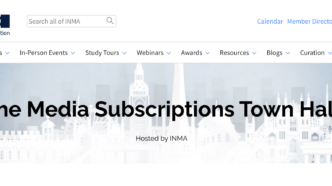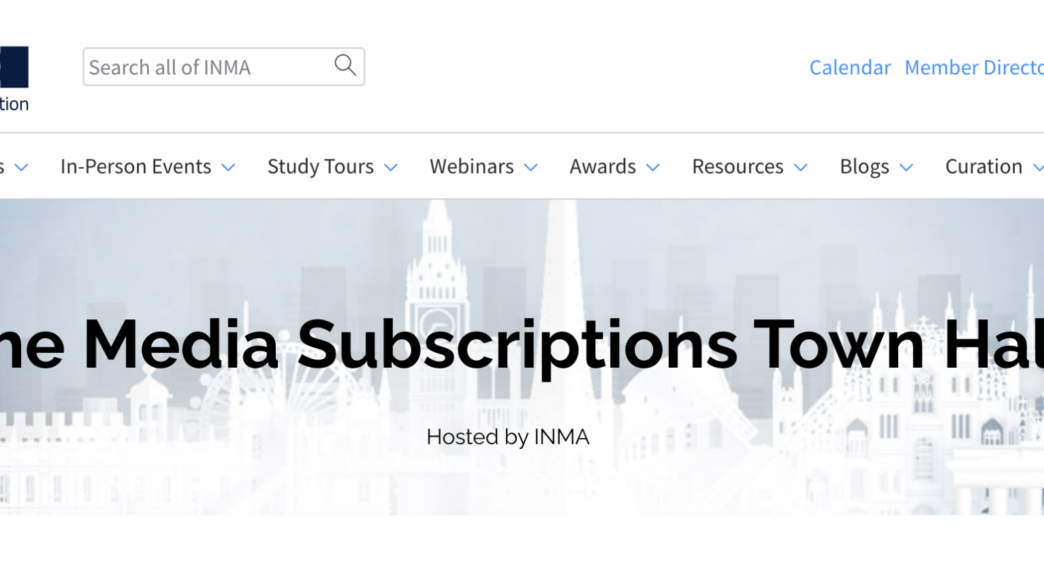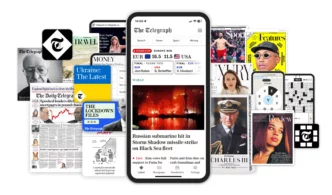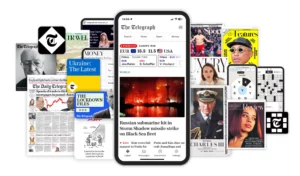

What we learnt from the event: - How inhouse structure impacts subscription growth - What framework proved efficient for publisher’s sustainable subscription model - How experimenting helps you learn faster - How engagement is at the core of subscription
The conference started well with optimists setting the trend. When asked about their confidence in the future of subscription growth, the vast majority of attendees answered positively:
- 54% expected a slow down in the subscription growth for 6-12 months but were confident in future recovery
- 39% were optimistic and believed they will grow the same or faster than before
- Only 7% were pessimistic, expecting a long-term negative impact and recession
So, what are the keys to a striving subscription economy, despite the rising costs of living, inflation and global crisis?
Here are our main takeaways from the conference:
1. Planning strategically for high-performing digital subscriptions: structure, accountability and a way of measuring success
It’s not just another framework.
FT Strategies’ Principal Consultant, Daisy Donald, and Senior Manager, Tim Part, underlined the necessity to have a north star to organize for subscriptions growth.
This should involve a 3-4 year vision for your digital subscription strategy. Defined with a clear framework: long term perspective and target results should be identified by management, while cross functional teams and collaboration are essential to achieve the said outcomes.
This means that the success of digital subscriptions largely hangs on how you structure your team. FT Strategies recommends a Subscriptions Council team, a Mission Control and finally an Experiment Team. While the Subscriptions Council defines the North star goals, the Mission Control team is prioritizing hypotheses, building the experiment teams and reporting on progress to the wider business. The Experiment team is the one implementing the experiments, proposing new opportunity areas and passing on data insights to the Mission Control.
Of course, this isn’t as easy in smaller teams where human resources are limited, but what matters is how your time is structured and who takes the lead on each of the 3 areas above.
Accountability is key and so is defining your metrics for success.
2. The three pillars of economic sustainability and moving our focus to what doesn’t change
An FT Strategies study on more than 450 news media outlets worldwide revealed that financial sustainability for publishers can be broken down into three main pillars:
- A differentiated product, i.e the ability to provide value, both in terms of innovation and stable elements amid transformations
- A sound business model
- Fundamentals, for instance skills to test and learn, or a favorable market context.
We hear people talk about transformation all the time. For good reason. However, Managing Director of News and Books Partnerships EMEA at Google, Sulina Connal, recommended we focus on what doesn’t change, taking the example of Google search.
In terms of information, Google Search is still looking for the same core signals: relevance in terms of language, location and expertise. This matches audience expectations: when looking for information, people continue to search for trusted sources and valuable information. And it’s this that should be at the core of your strategy.
3. Developing a culture of experimentation: the example of the Irish Times
Launching their digital subscription model back in 2015, The Irish Times has made use of a metered strategy to gather over 130K subscribers. According to Subscriptions and Reader Insights Director, Cliona Mooney, this is partly thanks to their culture of experimentation.
One of their experiments aimed at targeting a location-based audience; specifically, Irish readers in London.
Why this target audience? It represents a significant business opportunity as over 370K Irish nationals currently live in London
How were these tests put in practice? Eight “Irish in London” articles were published along with eight control articles over a 4-week period.
The result?
- Promoting London articles to London readers is more than twice as efficient as promoting non-London articles.
- Spike in overall London readership during the experiment.
The aim was to present these London readers with relevant content and engage them enough to ultimately convert them into subscribers. Although it’s too early to clearly evaluate conversion results, the 4-week trial has seen their London readership grow, something that will hopefully pay off in the future in terms of reader revenue.
NB: The spike in readership on the week of the 12th of September (prior to the London experiment) corresponds to the death of the Queen.
These tests also resulted in internal changes: the culture at the Irish Times has evolved to encourage continuous testing, helping teams to learn faster.
4. Diversifying audiences: the need for inhouse changes
Cordula Schmitz, Deputy Editor-In-Chief of the German regional outlet, The Hamburger Abendblatt, shared that they’re currently working to reach younger audiences, around the 35-55 mark.
Her advice on where to start? Change the publisher’s internal structure. By rethinking how departments are organized and run, they reshape the product being produced and can attract a new audience.
For instance, some publishers at the event mentioned redefining the relationship between journalists and marketers with the goal of integrating more data into editorial planning. Measuring engagement (including scroll depth for instance) came up as a key metric to understand the perceived value of content, thus influencing editors on future content production.
For FT, however, it’s not just about internal restructuring, but also product adaptations. For instance, to attract younger audiences, they’re working on a premium offer with a lower price point to entice students who wouldn’t normally be able to afford a subscription.











